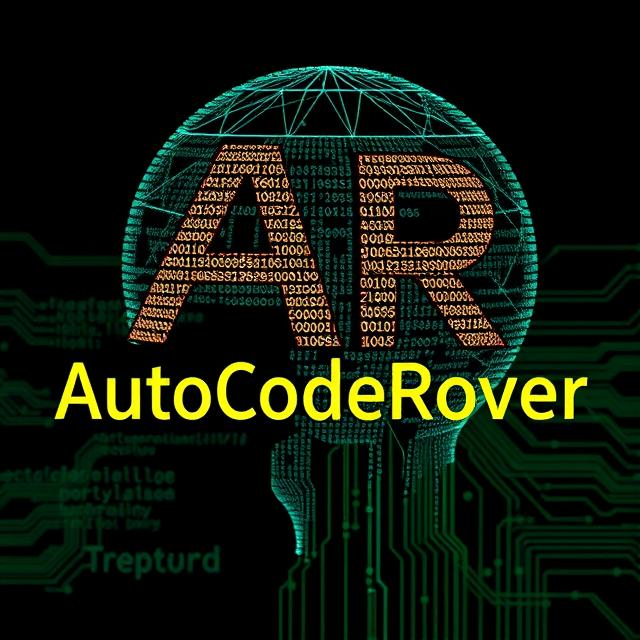Setting Up AutoCodeRover on Ubuntu: A Comprehensive Guide

AutoCodeRover is a cutting-edge tool designed for automatic program repair, leveraging AI to streamline software development and maintenance tasks. This guide provides a step-by-step walkthrough for setting up AutoCodeRover on an Ubuntu system, ensuring a seamless installation process.
Introduction to AutoCodeRover
AutoCodeRover is an AI-powered tool that automates the process of bug detection and repair in software projects. By integrating advanced machine learning models and program analysis techniques, it can identify and fix bugs in codebases, saving developers significant time and effort.
This guide focuses on setting up AutoCodeRover on Ubuntu 20.04, the recommended operating system for optimal performance.
Prerequisites
Before diving into the installation, ensure your system meets the following requirements:
System Requirements
- Operating System: Ubuntu 20.04 (recommended for compatibility and stability).
- Hardware:
- A GPU with at least 16 GB of VRAM.
- 32 GB of system memory for efficient AI-powered operations.
- Docker: Installed and configured on your system. If not, follow the official Docker installation guide.
- OpenAI API Key: Required for accessing AutoCodeRover's AI capabilities. Obtain one from the OpenAI website.
Installation Steps
Step 1: Clone the AutoCodeRover GitHub Repository
Navigate to the cloned directory:
cd auto-code-rover
Open your terminal and run the following command to clone the repository:
git clone https://github.com/your-repository/auto-code-rover.git
Replace your-repository with the actual URL of the AutoCodeRover GitHub repository.
Step 2: Build and Start the Docker Image
Once the image is built, run the Docker container:
docker run -it auto-code-rover /bin/bash
The -it flag ensures you are logged into the container interactively.
Build the Docker image using the provided Dockerfile:
docker build -t auto-code-rover .
This process may take some time, depending on your system's performance.
Step 3: Set Up OpenAI API Key
Inside the Docker container, set your OpenAI API key:
export OPENAI_API_KEY=your_api_key_here
Replace your_api_key_here with your actual OpenAI API key.
Step 4: Run AutoCodeRover
- Navigate to the
auto-code-roverdirectory within the container.
Run AutoCodeRover for your desired task:
python run_repair.py --task your_task_here
Activate the Conda environment:
conda activate auto-code-rover
Step 5: Using AutoCodeRover GitHub Action
AutoCodeRover also offers a GitHub Action for seamless integration into your CI/CD pipeline. Here's how to set it up:
- The repair results will be saved in the
repair_resultsdirectory of your repository.
Add the following workflow to your .github/workflows/auto-code-rover.yml file:
name: Run AutoCodeRover
on:
workflow_dispatch:
inputs:
bug_id:
description: 'Bug ID to repair'
required: true
type: string
jobs:
repair:
runs-on: ubuntu-latest
steps:
- uses: actions/checkout@v2
- name: Run AutoCodeRover
uses: seekayel/auto-code-rover-action@v1
with:
bug_id: ${{ github.event.inputs.bug_id }}
Setting Up a Workspace
Step 1: Create a Workspace
Create a directory for your Autoware workspace:
mkdir autoware
cd autoware
Step 2: Clone Repositories
For the latest updates, you can clone the nightly repositories (note: these may be unstable):
vcs import src < autoware-nightly.repos
Create the src directory and clone the necessary repositories using vcstool:
mkdir src
vcs import src < autoware.repos
Step 3: Install ROS Packages
Install dependent ROS packages using rosdep:
source /opt/ros/humble/setup.bash
sudo apt update && sudo apt upgrade
rosdep update
rosdep install -y --from-paths src --ignore-src --rosdistro $ROS_DISTRO
Step 4: Build the Workspace
Build the workspace using colcon:
colcon build --symlink-install --cmake-args -DCMAKE_BUILD_TYPE=Release
7. Conclusion
AutoCodeRover is a powerful tool designed for automatic program repair. Setting up AutoCodeRover on Ubuntu involves several key steps, including installing prerequisites, cloning the repository, building the Docker image, and configuring necessary API keys.
Whether you're integrating it into your development workflow or using it for research, AutoCodeRover is a powerful tool that can save time and improve code quality.